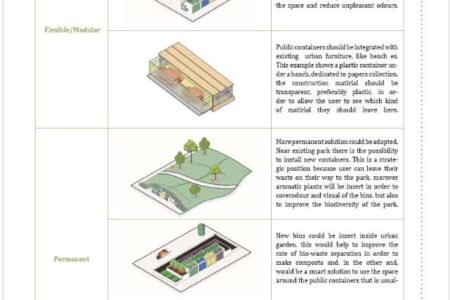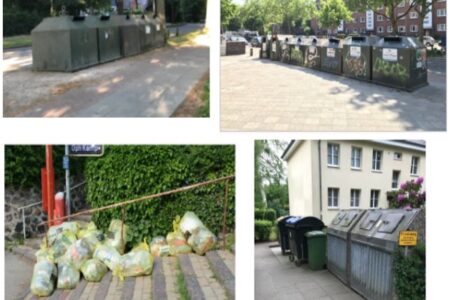Waste Flow
Several Waste (organic waste, plastic waste and other family waste)
Impact on PESTEL categories
Economic, Social, Technological, Environmental, Legal
Location of the good practice
District of Altona, Hamburg
Stakeholders involved
Ministry of Environment and Energy Hamburg, Ministry of Urban Development and Housing Hamburg, Stadtreinigung Hamburg, architects, planners and engineers, public and private housing companies
Keywords
Supply chain, selective waste, protect health
Description
In general, there is a lack of public recycling container sites. Existing container sites often suffer from littering and some of them are not well accessible for elderly and persons with a handicap. The sites where private bins are located especially in larger housing estates are often not well designed as one consequence citizens often do not separate waste correctly. Both public and private containers sites often have a negative impact on open spaces. Therefore, a design manual for architects and planners is proposed to improve private and public container sites in cooperation with citizens.
Objective
The solution aims to improve design and accessibility of containers and bins which will lead to a better usage. Consequently, the correct separation and recycling rate will increase, while littering will decrease. Environmental aims are reducing the odor; improving the environmental quality by greening the containers sites with aromatic plants or bushes and recycled materials for constructing the containers. Economic aim is an improved and more efficient waste management, caused by a better recycling rate. Social aim is to make neighborhoods more livable by redesigning the waste sites.
Pictures
For further information
Link to D5.7 Eco-innovative solutions Hamburg



